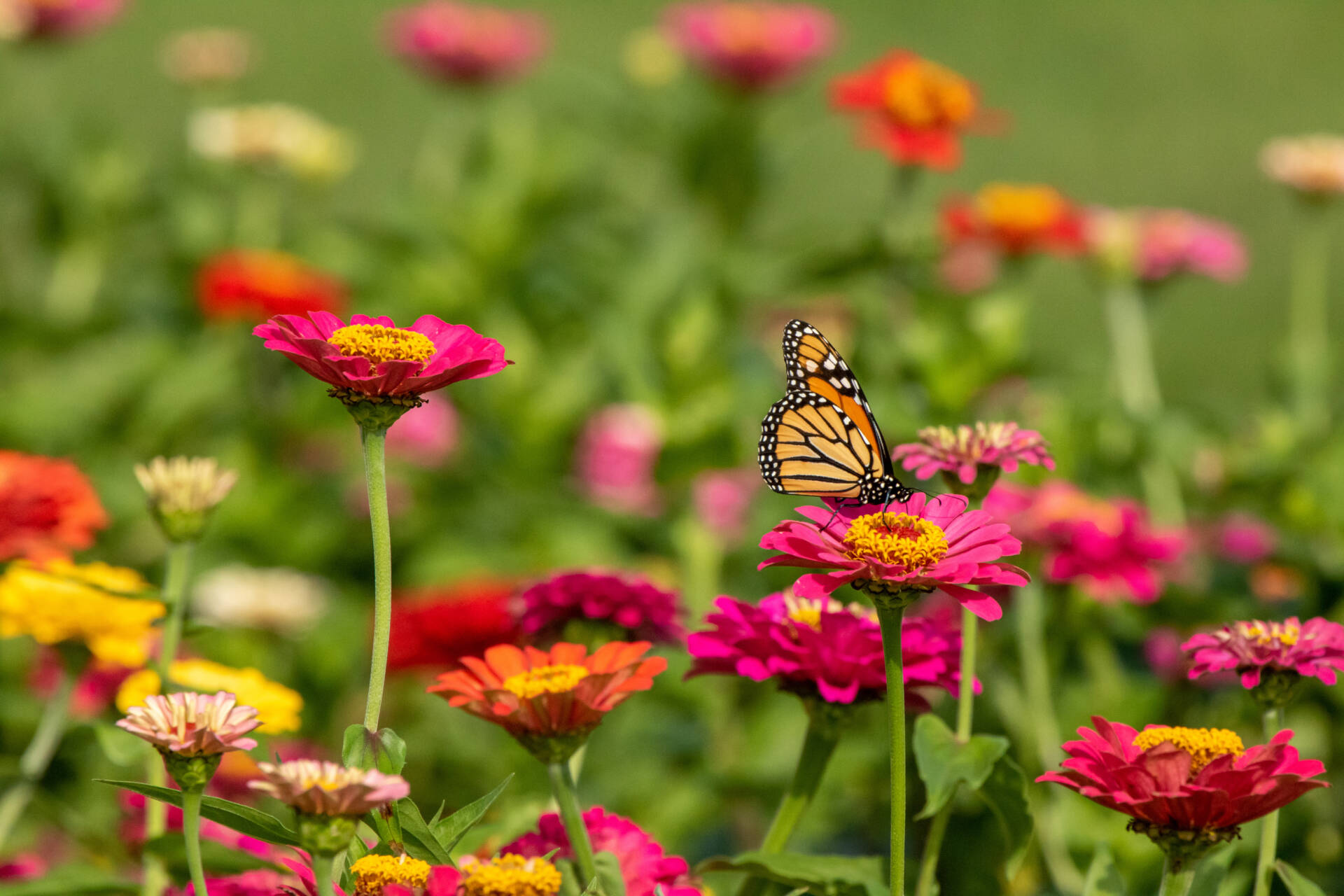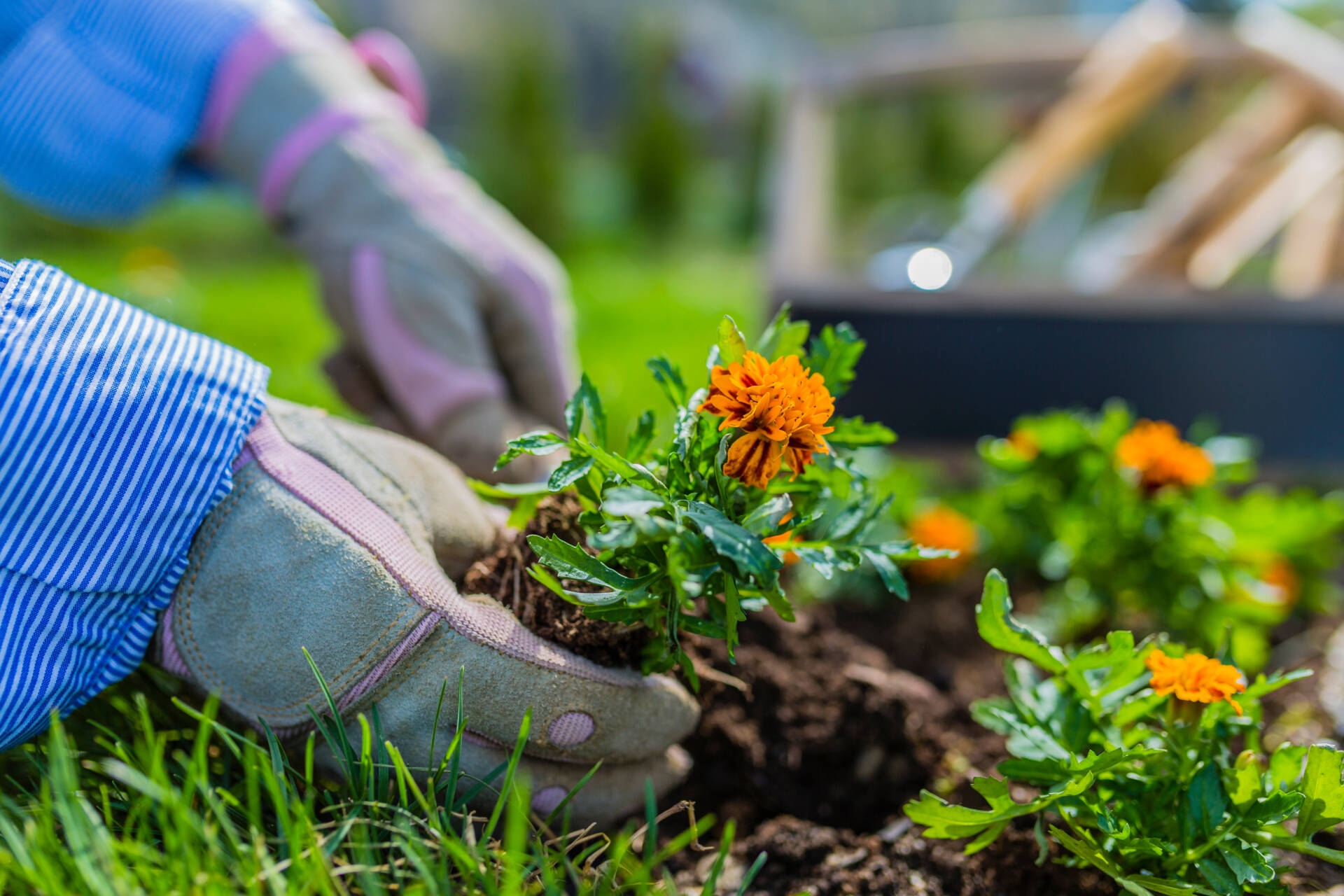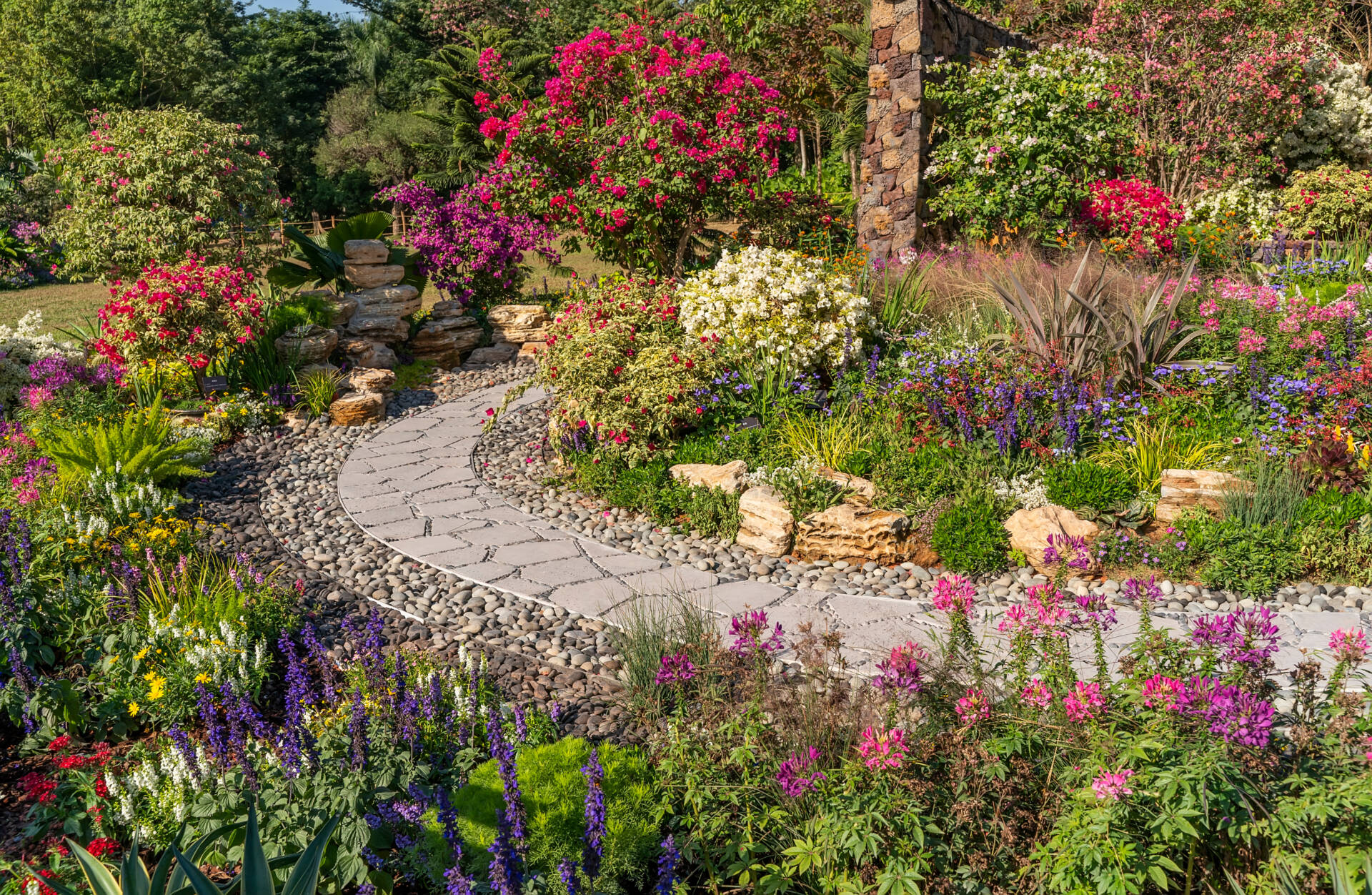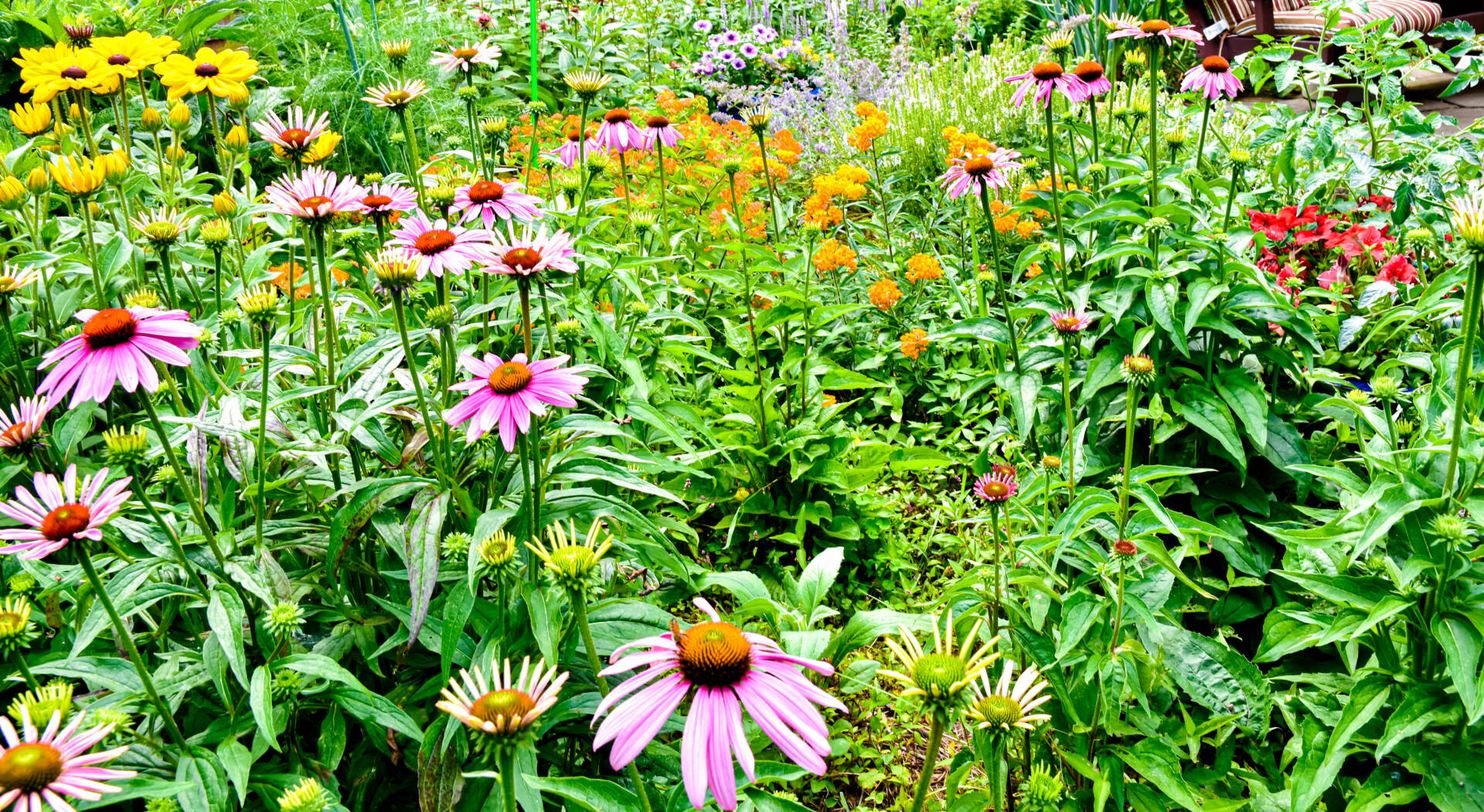Project Guide
How to Create a Pollinator Garden: Your Sustainable Garden Guide
Pollinating insects are more than just attractive visitors to our yards – they are the cornerstone of our ecosystem. Bees, butterflies, dragonflies, moths and even hummingbirds help plants reproduce by carrying pollen from male to female flower parts. Although some plants self-pollinate, and others rely on wind pollination, most plants rely on these animals for this vital role. In fact, according to the U.S. Forest Service, 80% of the planet’s crops require animal pollination. Without healthy pollinators, we would not have food, much less colorful, seasonal blooms. Local gardens contribute to keeping the pollinator population healthy and active. That is why we want to encourage and empower you to grow your own pollinator garden. In this guide, we will tell you how and include some tips to help keep pests away so you can enjoy all of your hard work.

Before You Start, Lay the Groundwork
- When to Start: Plant your garden after the last frost date. Average frost dates are listed by state on the Farmers’ Almanac.
- Choose Your Location: Your garden should get at least six hours of sunlight and have well-drained soil.
- Avoid Utility Lines: As with all garden projects, dial 811 to locate utility lines before you dig.
- Test Your Soil pH: Soil test kits are available at The Home Depot to test soil pH level and nutrient composition. These tests help determine if your soil is lacking any key nutrients that may need to be added to your garden through fertilizers. Many local university agriculture extension offices offer soil testing for a small fee.
- Prep Your Space: Clear the area of weeds and grasses. Weeds steal water and nutrients from other plants, so clearing them out will give your garden the best chance at success. It is ideal to clear the area by hand, but if you must use a weed killer, opt for Captain Jack’s Deadweed Brew or another organic, OMRI-certified option.
What You Will Need
- Lawn and Gardening Tools: shovel, hoe, trowel
- Plants to Attract Pollinators: Ideal native plants vary by U.S. hardiness zone, but these plants tend to grow in every zone. More detailed information and resources are outlined later in this article.
- Soil: organic soil and compost
- Mulch
- Decorative Elements: rocks and pebbles
- A Hose or Watering Can
Tools
- Hoe
- Hose
- Shovel
- Trowel
- Watering Can
Materials
- Compost
- Pebbles
- Rocks
- Mulch
- Plants to Attract Pollinators
- Plants to Deter Bad Bugs
- Soil
1. Choosing the Right Plants

Pollinators need native plants, so avoid the temptation of exotic plants as they will not be able to produce the pollen needed. Following guidance for regional native plants is the best way to ensure you plant the right things, and Xerces Society offers comprehensive regional lists of native plants for pollinators. A short list is available on the USDA web site, too. Local university agricultural extension offices are great resources for help in understanding native plants for pollinators in your local area. The following plants are some common choices and don’t forget to check if they’re right for your hardiness zone:
-
- Lavender
- Bee Balm
- Butterfly Bush
- Coneflower
- Salvia
- Milkweed
- Sunflower
- Goldenrod
- Liatris
- Zinnia
You may want to consider including plants that will deter pests like aphids, white flies and leafhoppers, such as marigolds, geraniums, mint or lavender.
2. Plant Placement
It is time to dig! When considering plant placement, proper spacing is crucial. Ensure that each plant has enough room to grow and access sunlight and water. Placing plants too close together will prohibit plant growth and can cause molds and mildews to form on the plants and in the soil, which will prohibit growth and render them useless to pollinators. And, of course, place taller plants strategically so they do not overshadow smaller ones. Follow the instructions provided on the plant information tag for details on how wide and tall the plant will grow, then you will be able to determine the ideal placement and spacing.
3. Balancing Mulch
Mulching helps control weeds and prevent water from evaporating too quickly from the soil. Typically, 1–2” of mulch is ideal. Using too much can suffocate plant roots, which need oxygen and can cause molds and mildews to form. Laying the right amount of mulch will help plants thrive and increase your odds of attracting a good variety of pollinators.
4. Garden Features

An ideal pollinator garden needs more than just plants. Pollinators benefit from flat stones for sunning, taller rocks and dense shrubs for shelter, and shallow water sources for hydration like a birdbath or even a saucer. To avoid mosquitos, add a mosquito dunk to eliminate mosquito larvae. These are safe to use around pets, wildlife and birds. These additional garden features not only aid pollinators, but also help your garden look more interesting and inviting.
5. A Word on Pesticides
Pests like aphids, white flies, and leafhoppers are common in the garden and feed on the plants you are trying to grow. If you encounter these pests, an organic pesticide can help. Certain chemicals can be harmful to the pollinators you are trying to attract, so it is important to choose an option with the OMRI label (Organic Materials Review Institute). And following application directions on the bottle is essential since pollinators are still at risk from direct spraying of some organic pesticides. Options include:
- Monterey’s Bacillus Thuringiensis (B.T.) is safe for bees and butterflies and can even be sprayed when they’re present.
- Insecticidal soaps and Neem Oil are also pollinator-safe options for pest control but be sure to spray at dawn or dusk when pollinators are not present.
A helpful listing of other options is available on Save Our Monarchs.
“Companion planting” – or adding plants that help your main attraction plants remain healthy – is the safest way to naturally deter garden pests without harming pollinators. Marigolds are the favorite as they repel bad bugs. And geraniums, lavender and mint can also be effective companion plants.
6. Monitor Your Garden
After planting, evaluate your garden to ensure it is receiving the right amount of sun and water. Keep an eye out for pests to ensure your plants are not stressed and are able to produce healthy blooms that attract pollinators. Stay on top of weeding so weeds do not have a chance to steal nutrients from your plants. As your garden matures and pollinators begin to visit, observe which plants are most popular. This will help you fine-tune your garden in future planting seasons.

Congratulations on creating a vibrant and beneficial resource for pollinators! We hope your garden becomes a hub of activity, buzzing with life and color as it serves a vital role in supporting your local ecosystem. You have made more than a mere garden – you have contributed to a healthier, more sustainable world. Thank you for making a difference with The Home Depot’s Eco Actions!
